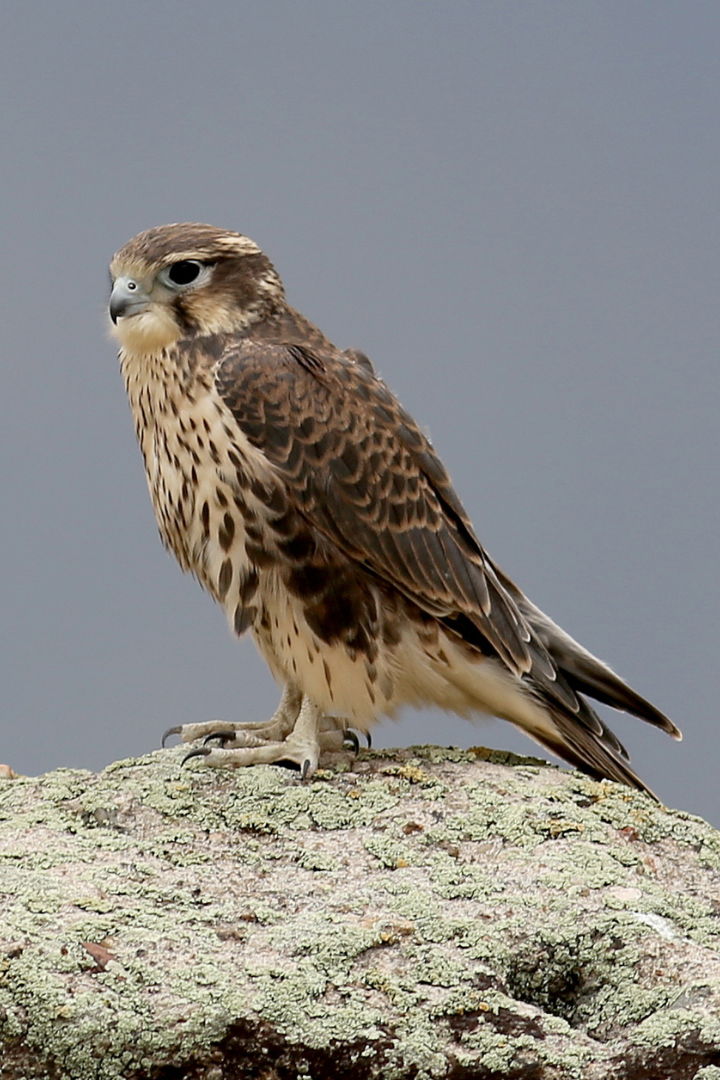
Prairie falcon
Scientific Name
Falco mexicanus
Identifying Characteristics
Much larger than either the American kestrel or merlin, prairie falcons are uniformly brown on the back and wings, with a pale head and streaked underside. The head has a "blocky" or crew-cut appearance and the eyes appear large for the size of the head.. In the field, prairie falcons can be recognized by their large typical falcon profile and lack of color.
Range
Found only in western North America, Baja, and northern Mexico, the prairie falcon does not breed in Minnesota but can be seen here during spring and fall migration. An occasional sighting is reported around the Twin Cities area some winters.
Habitat
Found in arid and semi-arid plains, this is a falcon of open country that nests on rock cliffs in river gorges and occasionally in timbered mountains. Nests are often scraped on ledges although old stick nests of ravens or other raptors will be used.
Nesting
Nesting Info
Feeding Habits
Prairie falcons feed on a variety of prey, including ground squirrels and prairie dogs, lizards, and birds, especially those that are ground dwelling. Immature birds eat large quantities of insects.
Raptor Center Data
A rare patient.
Conservation Notes
Prairie falcons have no special conservation status.